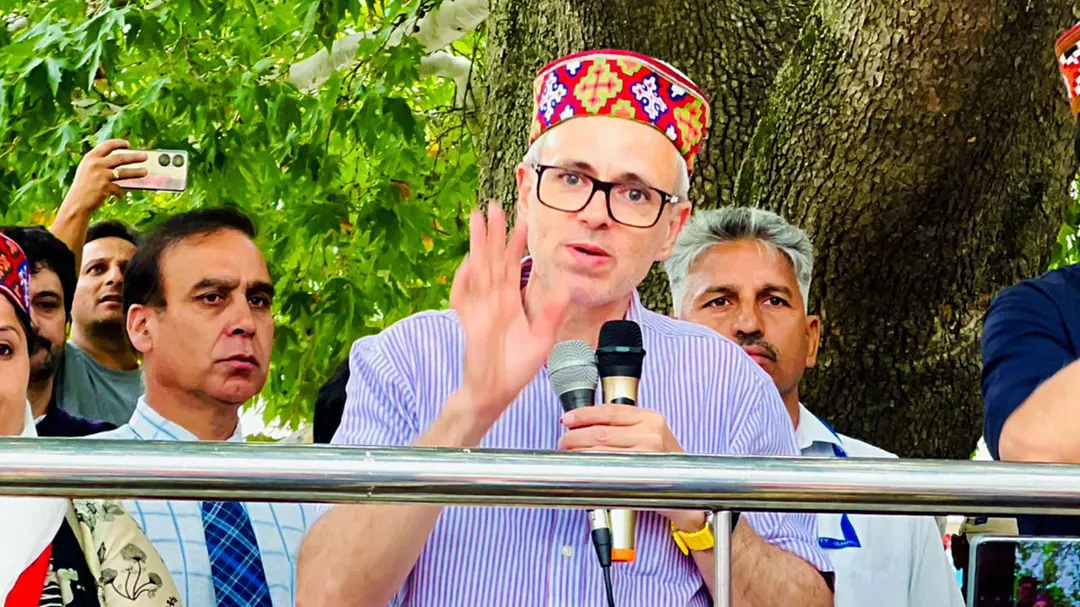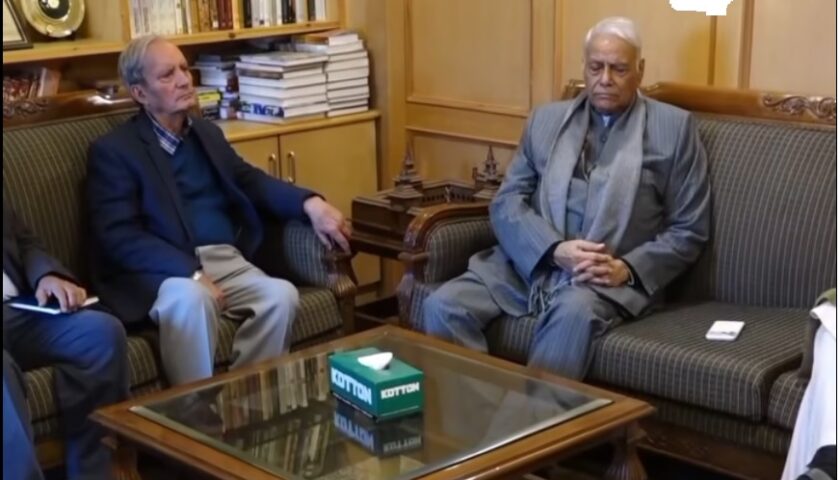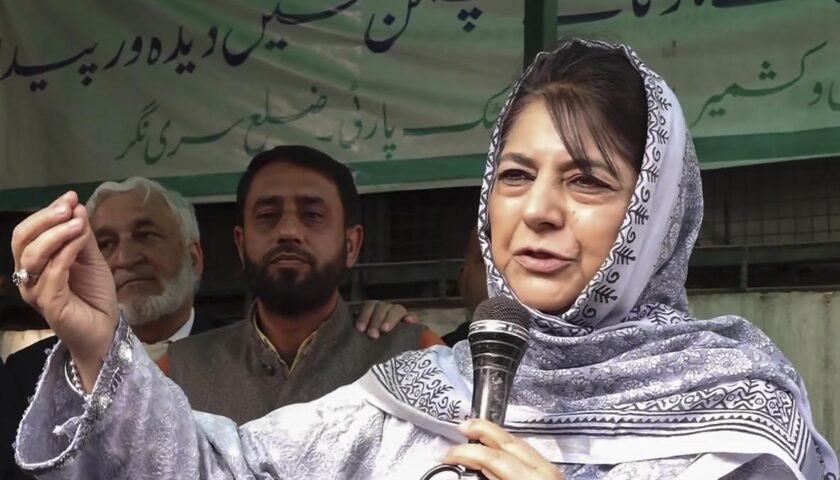When Budgam votes again, it may deliver more than a single MLA—it could deliver a verdict.
By: Javid Amin | 09 October 2025
As the autumn political calendar advances, all eyes are turning to Budgam. Once considered a relatively safe seat for the National Conference (NC), the upcoming by-election has been recast as a referendum on the performance of the Omar Abdullah government, which recently crossed its first anniversary in office.
Scheduled for November 11, 2025 (with polling for Budgam and Nagrota announced jointly) the Budgam contest—or more surgically, how Budgam votes—could send ripples across Jammu & Kashmir (J&K) politics. News on Air+2www.ndtv.com+2 It’s no exaggeration to call Budgam a “bellwether” for the Valley; it combines urban and rural dynamics, comprises government employees, youth, agriculture, and local business classes. Its electoral choice often reflects broader Valley moods.
But this bypoll is different. Unlike in a stable legislative term, Budgam arrives at a moment when the NC government is under pressure to show delivery, credibility, and responsiveness. Rather than a local skirmish, it is being cast as a test of governance, legitimacy, and voter patience.
This article unpacks why Budgam matters now, how the NC government’s record is being perceived, who the key players are, what the major issues will be, and what possible outcomes and implications lie ahead.
Why Budgam Matters
A Constituency of High Symbolic and Strategic Value
Budgam (Assembly constituency No. 27) lies in central Kashmir and is part of the Baramulla Lok Sabha seat. Over the decades, the seat has alternated hands, but remains politically sensitive—and watchful.
In the 2024 Assembly elections, Omar Abdullah contested from two constituencies, Budgam and Ganderbal, and upon his victory from both, resigned from Budgam to retain Ganderbal. That set the stage for this bypoll.
In effect, Budgam becomes the place where the electorate will judge: Did the NC fulfill its promises? Are declarations translating into delivery? Is the government responsive, especially in non-core constituencies, away from symbolic strongholds?
Additionally, Budgam is not just “Kashmir Valley” in abstraction—it has complex internal dynamics: rural hamlets, urban centers, administrative staff, youth migration, land issues, and local infrastructural deficits. A victory or loss here sends both morale signals and narrative framing for future contests, especially in bypolls in Anantnag, Kupwara, and Rajouri.
Thus, while bypolls often hinge on local issues, Budgam’s result will be read as a midterm referendum on NC’s governance. This magnifies both pressure and stakes.
Omar Abdullah’s Government: One Year In — Record, Critiques & Constraints
Promises vs Implementation: Mixed Reviews
When the NC-led government was sworn in (October 2024), it brought a platform heavy with expectations. Key pledges included:
-
Restoration of statehood for J&K
-
200 units of free electricity
-
12 LPG cylinders per year
-
Creation of 100,000 jobs
-
Upgrades in education, health, infrastructure
Over the past year, the government claims it has held 16 cabinet meetings and cleared 97 files. But critics and analysts argue that much of this remains on paper.
Opposition voices assert that implementation has lagged—especially in districts like Budgam, which are away from the Valley’s core centers of power. Some contend that the government has prioritized announcements over boots-on-ground work.
An NC strategist has countered that the “dual governance” or hybrid model imposed on J&K post-2019 makes major policymaking harder. That is, while elected government handles many administrative functions, the Lieutenant Governor and Union/central oversight retain controlling levers in many areas.
Nevertheless, the tension is palpable. For voters, declarations may satisfy the mind, but what matters to their daily lives is pipelines fixed, schools functioning, ration delivered, job applications processed, roads rebuilt. Budgam will test whether the NC has converted promise into performance.
Constraints & Structural Limitations
One consistent defense from the NC government has been that the Union Territory (UT) and central oversight limit its scope. The post-2019 reorganization of J&K into a UT has meant many powers sit with the Lieutenant Governor and central ministries.
Governance observers say that in such a setup, initiatives must often ripple through multiple layers—requiring approvals and cooperation from central agencies. That slows down delivery, reduces administrative flexibility, and creates moral hazard: elected officials get blamed for delays beyond their control.
That said, opposition critics argue that even within constraints, many local and medium-level decisions could have been pushed sooner—and the gap between “could have done” and “did do” is widening.
Shifts in Messaging & Narrative Adjustments
As the bypoll approaches, the NC leadership appears to have subtly shifted tone. Rather than overpromising big sweeping change, it is trying to set more cautious expectations, linking delays to structural bottlenecks, central constraints, and emphasizing continuity.
Omar Abdullah has publicly reiterated his commitment to restoring statehood—not via alignment with BJP, but through principled engagement and legislative push. He has ruled out forming an alliance with BJP to fast-track statehood, preferring to maintain political clarity even if it slows the process.
This recalibration is understandable: while ambition energizes, overreach invites backlash. In Budgam, the NC must balance hope with humility.
Voter Sentiment in Budgam: Ground Mood, Aspirations & Frustrations
To understand how Budgam might vote, we must listen to what local voices are saying.
Youth: Expectation Meets Frustration
In Chadoora and surrounding blocks, the youth say they were optimistic when the NC won in 2024—many believed a fresh government would bring internships, skill training, and employment. Now, years later, that impatience is growing.
“We voted for change. Now we want results,” says a teacher in Chadoora.
“So many graduates are stuck with no projects, no internships. NC says ‘jobs’—but where are they?”
The frustration is not unique to Budgam; it echoes across Kashmir, but here it is sharper, because many youth are educated and have basic awareness of what is possible.
Farmers & Artisans: Call for Clarity & Support
Agriculture, horticulture, and small artisanal trades are significant in the Budgam belt. Many farmers still demand clearer subsidy regimes, prompt procurement, price support, and access to markets.
Some local artisans complain of irregularities in inputs, delays in payments, or prioritization of bigger contractors over village producers.
For them, campaign promises of “support to rural sector” must translate into seed, fertilizer, electricity, transportation, and market linkages.
Government Employees & Service Regularization
Budgam has a sizable number of government employees—teachers, panchayat staff, public works, health. They are closely watching pay revisions, regularization of service, pending arrears, and job security.
If the government demonstrates administrative goodwill—prompt wage payments, regular pay revisions, efficient transfers—that would generate goodwill among this influential group.
Women & Basic Services
Women voters point to healthcare, maternal facilities, supply of essential commodities, ration delivery, and water supply as immediate concerns.
In many hamlets, a woman’s voice is often tied to whether the local clinic is functional, medicines available, and whether the public distribution system reaches the door.
Local Voices & Political Influencers
A significant factor in Budgam is the influence of local leaders—religious, social, clan, family networks, community elders. National or regional narratives matter less here; what matters is whether a candidate is rooted locally, listens, and is accessible.
One interesting variable is Aga Syed Ruhullah Mehdi. He has been a long-time figure in Budgam, having represented it earlier, and has publicly criticized the Omar Abdullah government for allegedly undermining the NC mandate and not enforcing party discipline. Some believe that unless NC reconciles with him or brings him on side, its hold in Budgam could weaken.
Opposition Strategy & Contestants
Scheduled By-Election Dates & Context
The Election Commission has formally scheduled the by-elections for 27-Budgam and 77-Nagrota on November 11, 2025. The result will be declared on November 14, 2025. News on Air
Notification is to be issued October 13; last date for filing nominations is October 20; scrutiny on October 22; withdrawal by October 24.
Though in your summary you mentioned “October 22” as polling, the updated schedule is November 11 per Election Commission. This shift is an important factual correction to factor in.
Thus, in this refined timeline, Budgam is not so immediate (October) but just over a month away from now. That timing gives parties some room to organize, but not much.
Who’s Running / Who Might
-
National Conference (NC): While no candidate has been officially announced (as of public reports), Nasir Aslam Wani, the Chief Minister’s adviser, is widely believed to be the NC pick.
-
PDP: According to reports, Aga Syed Muntazir may be considered. This would be a strategic move by PDP to reassert presence in central Kashmir.
-
Apni Party: Its leadership has declared it will contest both Budgam and Nagrota, criticizing the NC government for failing to deliver.
-
Independent / Local Candidates: Given the fluid nature of J&K politics, there may be credible independent candidates, defectors, or local front-runners who have strong grassroots ties.
BJP may also attempt a contest here, but its strength in central Kashmir is limited; its strategy may hinge on splitting votes rather than direct win.
Tactics, Alliances & Vote Splitting
This will be a multi-cornered contest, with fragmentation being a major factor. If opposition parties fail to coordinate, vote splitting could benefit NC, especially if its core vote remains intact.
But given the criticisms and voter restiveness, NC cannot take its base for granted. If Apni, PDP, or independents succeed in consolidating anti-NC votes, they may pose surprise threat.
Also, given the local fatigue with “recycled faces,” new entrants with fresh appeal may cut into vote share of established players.
What’s at Stake
Symbolic Validation or Rejection
A win for NC could be spun as validation of its governance model, its credibility despite structural constraints, and reaffirmation of its Punjab/Kashmir axis. But a loss or narrow win would be portrayed by opposition as mandate reversal: that the people are dissatisfied.
Momentum for Upcoming Bypolls
Budgam will set the tone for bypolls in other districts—Anantnag, Kupwara, Rajouri. A strong showing could galvanize NC and allied parties; a weak one might embolden rivals.
Policy Recalibration
The NC government may need to recalibrate its priorities: focus more resources to rural districts, accelerate smaller deliverables ahead of Budgam, and up its communication in the interim.
Opposition Morale & Media Narrative
A surprise upset or close call would raise morale among opposition parties, generate media coverage of NC underperformance, and possibly help opposition negotiations in future contests (Rajya Sabha, other bypolls).
Possible Scenarios & Predictive Outcomes
To think through possibilities, here are a few scenarios and their implications:
| Scenario | Likely Outcome | Implications |
|---|---|---|
| NC wins comfortably (margin) | Reinforcement of legitimacy for the government; opposition will push narrative of “tolerance” rather than rejection | NC gets breathing space; government may press ahead with bigger initiatives; opposition regrouping |
| NC holds but with much reduced margin / closer contest | A message of caution, showing slippage in support; opposition will claim momentum | NC forced into introspection, possible cabinet adjustments, increased focus on Budgam area, prioritizing quick projects |
| NC loses to opposition / independent coalition | Strong signal of discontent; opposition gains momentum; narrative shift starts | Potential internal challenge within NC, pressure from coalition partners, rewriting of agenda, possible mid-term course change |
Given ground sentiment and disquiet in many quarters, the most realistic outcome is a narrow win for NC, with a significantly reduced margin compared to 2024. But if opposition alliances are neat, and local dissatisfaction deep, an upset is not impossible.
Challenges, Variables & Wildcards
-
Voter Turnout: If turnout is low—especially in remote hamlets, or where security or weather challenges persist—NC’s core base may have proportionally better mobilization, giving it advantage.
-
Local Disputes & Influencers: Maneuvering by local strongmen, religious leaders, community elders, and resolving internal party dissent will matter.
-
Last Minute Shocks: Incidents of violence, administrative bungling, ECI rulings, court cases, or defections close to nomination withdrawal could tilt things.
-
Electoral Integrity & Monitoring: As in earlier contests, allegations of unfair practices, booth management, inaccuracies in voter rolls, medium of campaign media usage, etc., will be scrutinized.
-
Messaging & Ground Action: Which candidates are seen as “doing work,” even in the short interregnum—repairing roads, responding to grievances, distributing relief, engaging with communities—will influence perceptions.
Conclusion: A Crucible for NC’s Credibility
The Budgam bypoll is more than filling a legislative seat. In the context of J&K’s evolving political landscape, it is an early midterm test for the NC government, a gauge of voter patience, and a barometer for whether governance promises translate into popular support.
For Omar Abdullah’s government, this is a chance to prove its mettle under pressure—and to show that its first year was not just about rhetoric, meetings, or file clearances. It needs to convert strategic advantage into local trust, bridge perception gaps, and defend its record under scrutiny.
For the electorate, Budgam offers an opportunity: to weigh choices not merely on party loyalty but on accountability, performance, and responsiveness. Whoever wins, the verdict this time will echo beyond Budgam.




